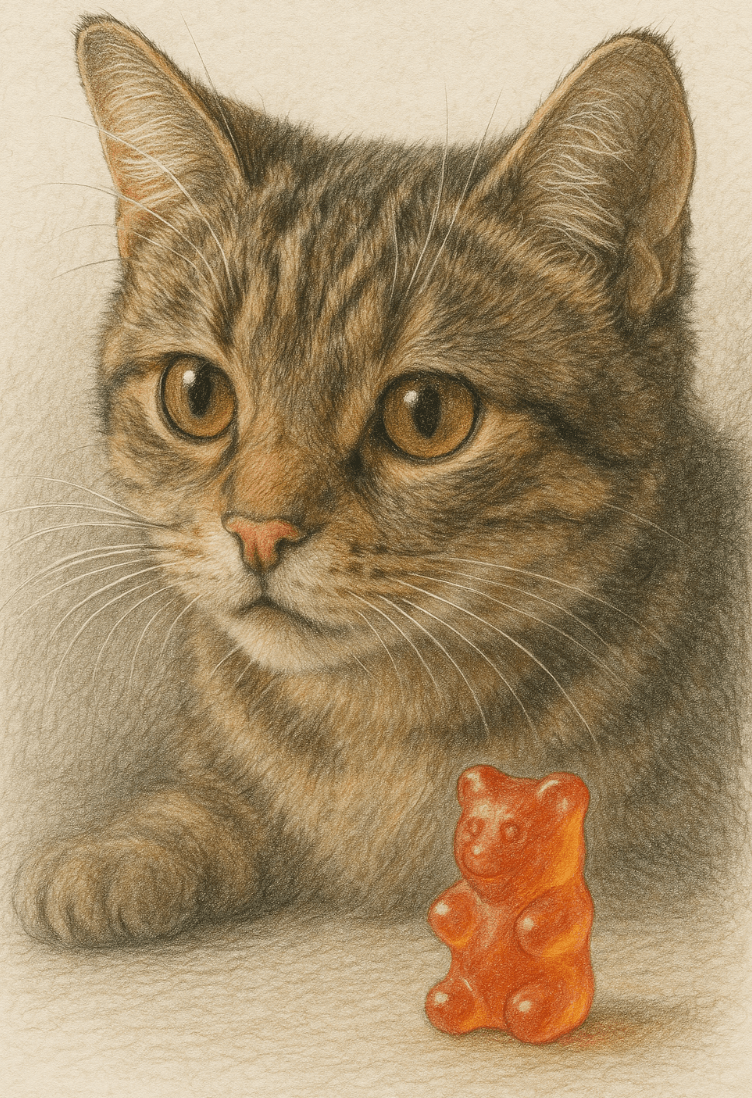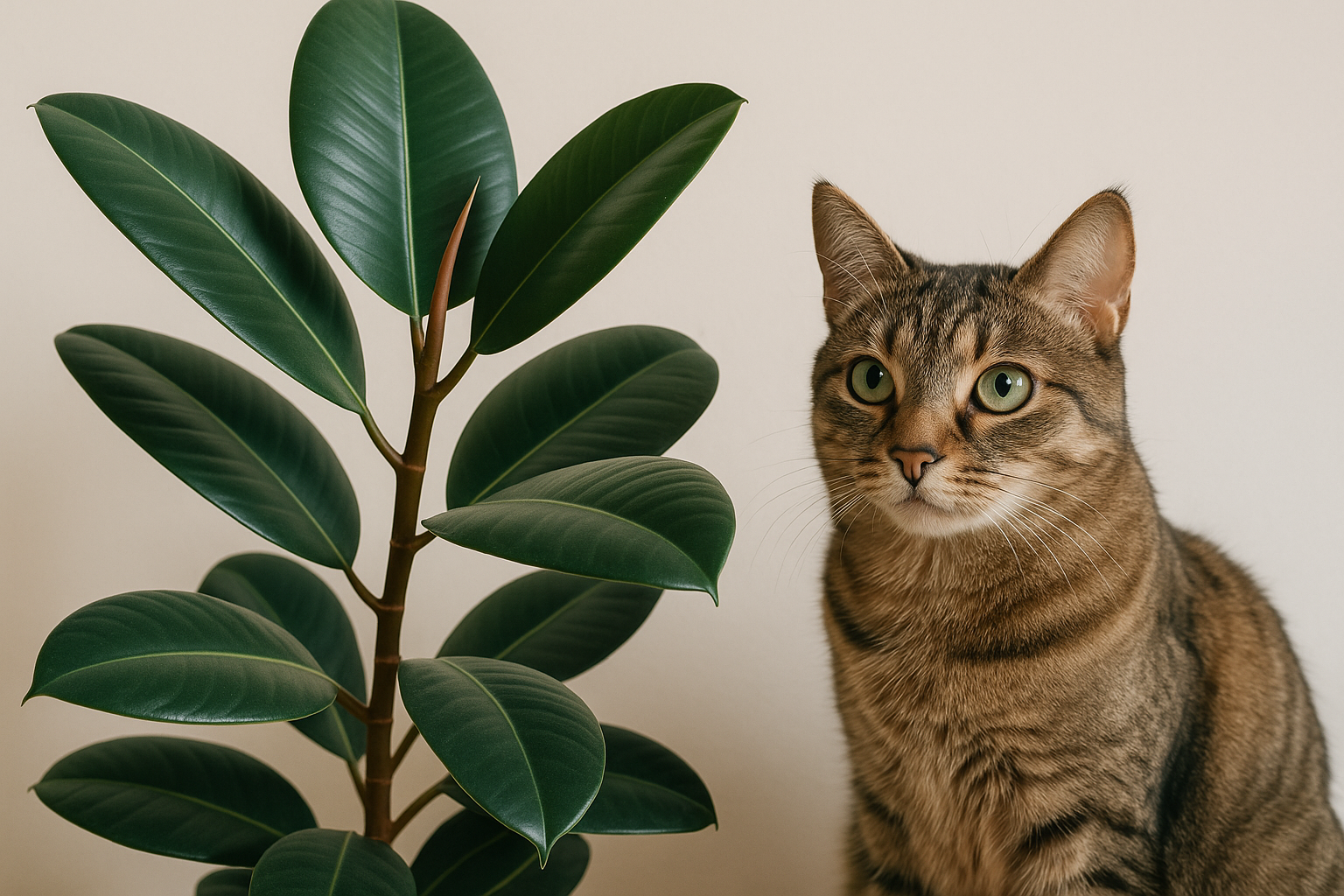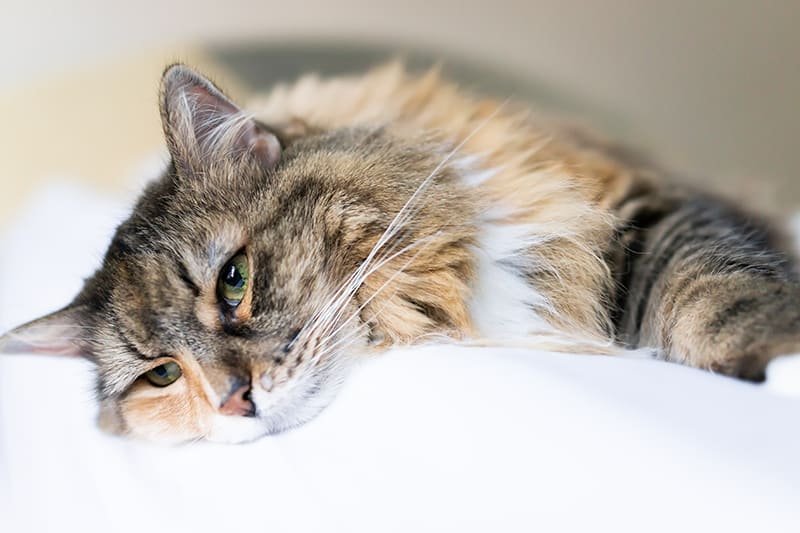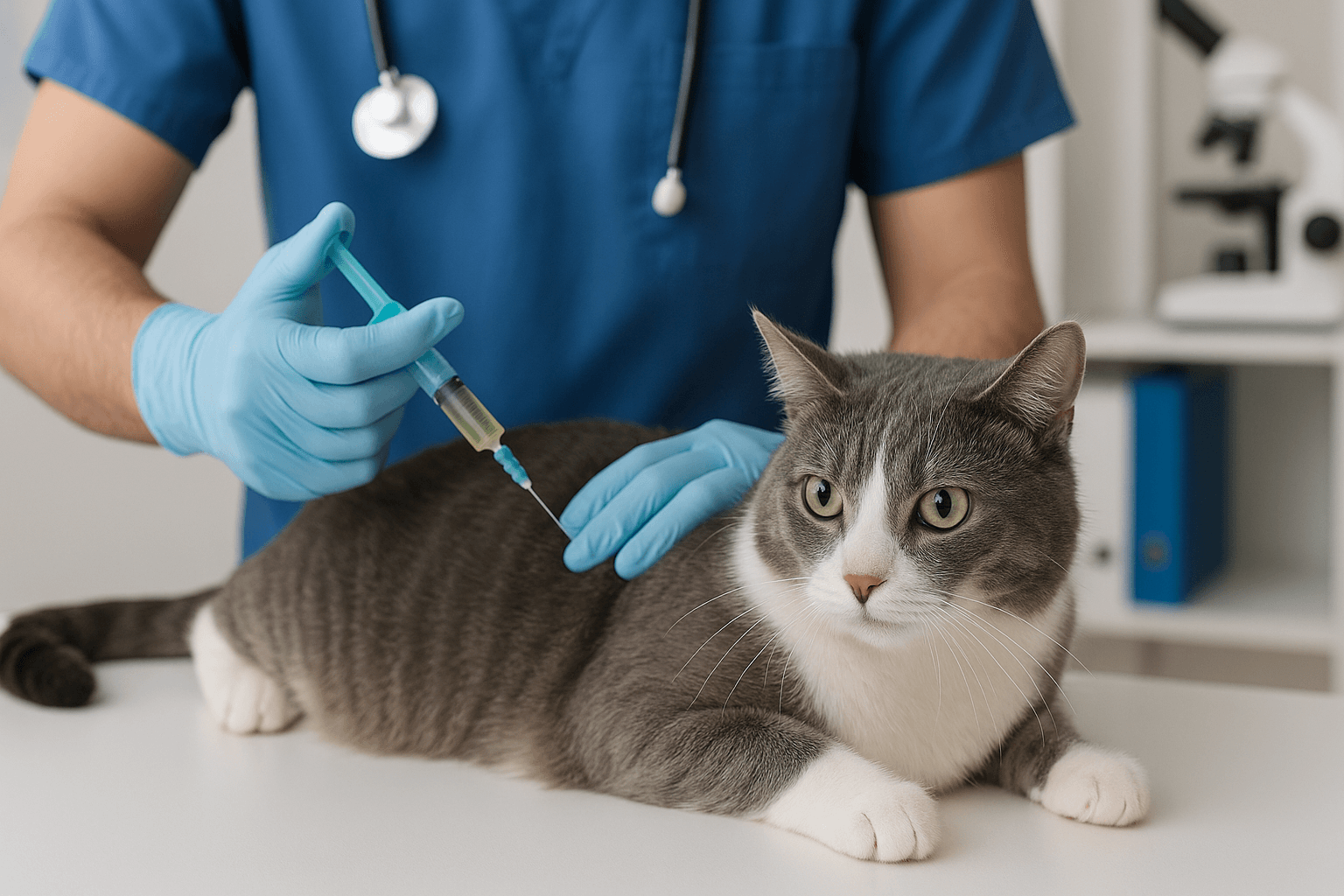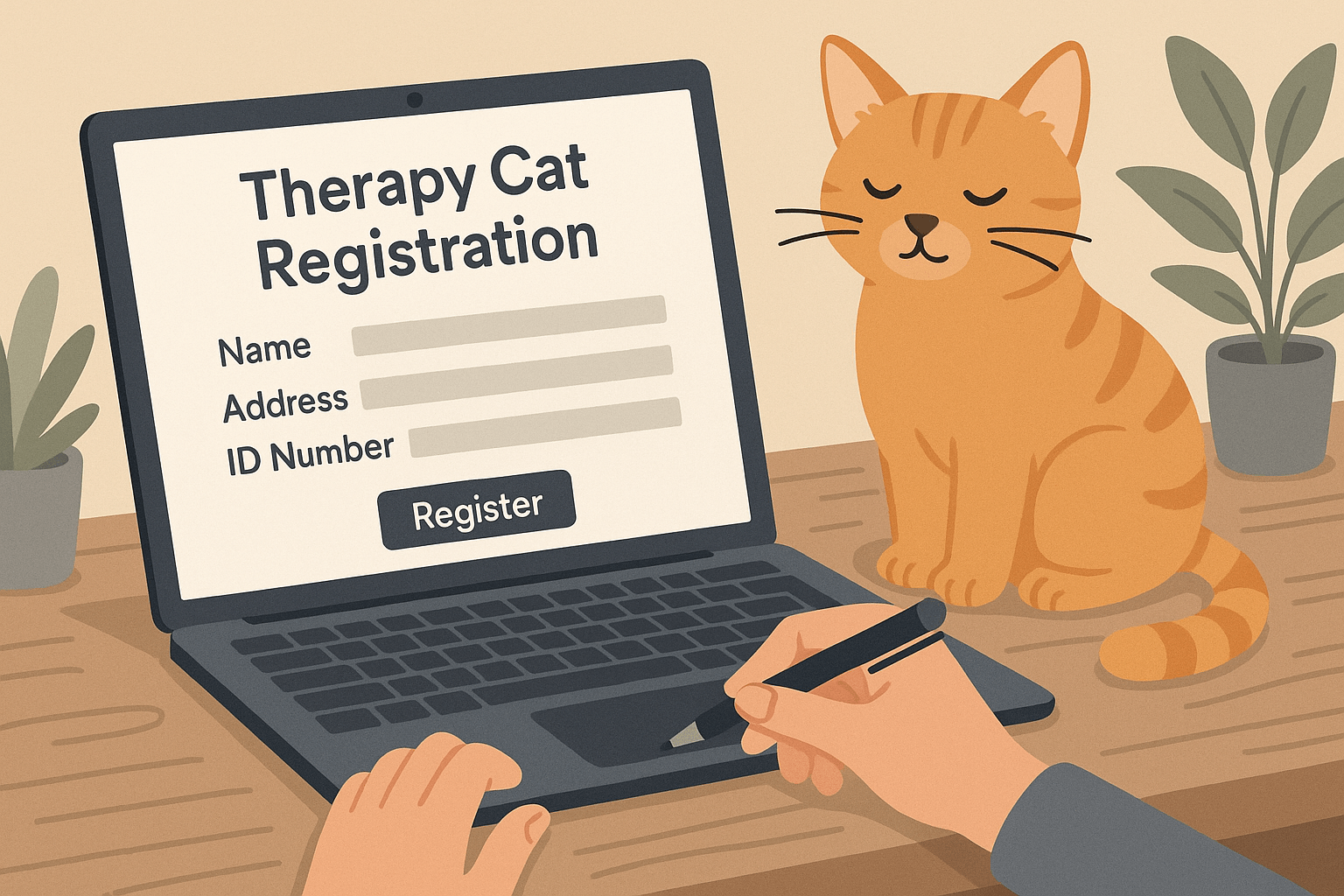Can Cats Eat Gummy Bears?
Cats are naturally curious creatures, and their tendency to investigate anything new—including human snacks—can leave pet owners wondering about the safety of certain foods. One common question is whether cats can eat gummy bears. While these chewy candies might be a favorite treat for humans, they’re not necessarily safe or healthy for our feline friends. Understanding what’s in gummy bears and how it affects cats is crucial before sharing any with your pet. In this blog post, we’ll explore the risks, alternatives, and expert advice to help you make informed decisions about your cat’s diet.
Why Gummy Bears Are Not Safe for Cats
Gummy bears may seem harmless at first glance, but their ingredients can pose significant risks to your cat’s health. Here are some reasons why gummy bears should not be part of your cat’s diet.
High Sugar Content:
Gummy bears are packed with sugar, which can lead to obesity, dental issues, and even diabetes in cats if consumed regularly.Artificial Additives:
Many gummy bears contain artificial colors, flavors, and preservatives that can upset your cat’s stomach or cause allergic reactions.Gelatin Risks:
Gelatin, a key ingredient in gummy bears, is difficult for cats to digest and offers no nutritional value.Choking Hazards:
The chewy texture of gummy bears can pose a choking risk, especially for smaller cats or those prone to gulping food.Potential Toxic Ingredients:
Some gummy bears contain xylitol, an artificial sweetener toxic to cats, which can cause severe health issues like liver failure.
These factors make gummy bears an unsuitable snack for cats, emphasizing the importance of keeping them out of reach.
Signs Your Cat May Be Affected by Eating Gummy Bears
If your cat accidentally consumes gummy bears, it’s essential to monitor them closely for signs of distress or illness. Here’s what to look for and how to respond.
Vomiting or Diarrhea:
These symptoms often indicate digestive upset caused by the high sugar or artificial additives in gummy bears.Lethargy or Weakness:
A sudden lack of energy could signal poisoning, especially if xylitol was ingested.Excessive Drooling:
Drooling may occur if your cat is experiencing nausea or discomfort from consuming something indigestible.Loss of Appetite:
Refusal to eat can indicate gastrointestinal irritation or more serious health concerns.Difficulty Breathing:
Choking on a piece of gummy bear requires immediate veterinary attention to prevent suffocation.
Recognizing these signs early allows you to seek prompt medical care and minimize potential complications.
Check this guide 👉Can Cats Eat Mice? Best 7 Expert Tips!
Check this guide 👉Can Cats Eat Chives? Best 7 Expert Tips!
Check this guide 👉Can Cats Eat Goat Cheese? Best 7 Expert Tips!

Safe Treat Alternatives for Cats | Ingredients to Avoid in Cat Treats |
|---|---|
Plain cooked chicken (unseasoned) | Artificial sweeteners like xylitol |
Small pieces of fish (boneless) | High sugar content |
Catnip-infused treats | Artificial colors and flavors |
Freeze-dried meat snacks | Preservatives like BHA/BHT |
Homemade pumpkin puree | Chocolate or caffeine-containing items |
How to Safely Introduce New Foods to Your Cat
While gummy bears are off-limits, introducing safe human foods or treats to your cat can enrich their diet when done correctly. Follow these guidelines to ensure a smooth transition.
Consult Your Veterinarian First:
Always check with your vet before offering any new food to confirm its safety and appropriateness for your cat.Start with Small Portions:
Introduce tiny amounts to see how your cat reacts and avoid overwhelming their system.Avoid Seasonings and Spices:
Plain, unseasoned foods are best, as spices and seasonings can irritate your cat’s stomach.Monitor for Allergic Reactions:
Watch for signs like itching, swelling, or vomiting after introducing a new food.Stick to Species-Specific Treats:
Opt for treats specifically formulated for cats to ensure proper nutrition and safety.
By following these steps, you can safely expand your cat’s palate without compromising their health.
Tips for Keeping Harmful Foods Away from Your Cat
Preventing accidental ingestion of unsafe foods like gummy bears is key to protecting your cat’s well-being. These tips will help you create a safer environment.
Store Snacks Out of Reach:
Keep gummy bears and other human snacks in sealed containers or high shelves where your cat can’t access them.Supervise During Meal Times:
Ensure your cat isn’t sneaking bites of your food while you eat to avoid unintended exposure to harmful ingredients.Teach “Leave It” Commands:
Training your cat to ignore certain items can reduce the likelihood of them eating something dangerous.Pet-Proof Your Home:
Remove small objects, wrappers, or candies that could tempt your cat to nibble on them.Educate Family Members:
Make sure everyone in your household understands which foods are unsafe for cats to share.
Taking these precautions minimizes the risk of accidental poisoning or dietary mishaps.
Common Mistakes to Avoid When Feeding Cats Human Food
Feeding cats human food can be tempting, but certain mistakes can jeopardize their health. Avoiding these pitfalls ensures a safer approach to sharing snacks.
Assuming All Human Foods Are Safe:
Many seemingly harmless foods, like onions or garlic, are toxic to cats and should be avoided entirely.Overfeeding Treats:
Too many treats can disrupt your cat’s balanced diet and lead to weight gain or nutritional deficiencies.Ignoring Portion Sizes:
Even safe foods can cause problems if given in excessive amounts; moderation is key.Neglecting Veterinary Advice:
Skipping a vet consultation before introducing new foods increases the risk of adverse reactions.Leaving Food Unattended:
Leaving snacks within your cat’s reach invites accidents and potential ingestion of harmful items.
Avoiding these mistakes helps protect your cat from unnecessary health risks.
Understanding Your Cat’s Nutritional Needs
Cats have unique dietary requirements that differ significantly from humans. Understanding their needs ensures you provide the right nourishment.
High Protein Requirement:
Cats are obligate carnivores, meaning they thrive on diets rich in animal-based proteins.Limited Carbohydrate Tolerance:
Unlike humans, cats don’t process carbohydrates efficiently, making sugary treats like gummy bears unsuitable.Essential Vitamins and Minerals:
Taurine, arachidonic acid, and vitamin A are vital nutrients that must come from their diet to support overall health.Hydration Through Wet Food:
Incorporating wet food into their diet helps meet hydration needs, reducing the risk of urinary tract issues.Avoiding Processed Foods:
Highly processed snacks lack the nutrients cats need and can lead to long-term health problems.
Meeting these nutritional needs ensures your cat remains vibrant and healthy throughout their life.
Fun Ways to Treat Your Cat Without Risking Their Health
Rewarding your cat doesn’t require risky human snacks—there are plenty of creative and safe ways to spoil them.
DIY Cat Treat Recipes:
Make homemade treats using ingredients like tuna, chicken, or pumpkin to control exactly what goes into their snacks.Interactive Puzzle Feeders:
Fill puzzle feeders with kibble or treats to engage their mind and provide mental stimulation.Cat Grass or Herbs:
Offer cat grass or catnip as a natural and enjoyable treat that satisfies their chewing instincts.Freeze-Dried Meat Snacks:
These treats mimic the texture and flavor of raw meat, providing a satisfying and nutritious option.Quality Commercial Treats:
Choose reputable brands designed specifically for cats to ensure safety and nutritional balance.
These alternatives allow you to indulge your cat responsibly while keeping their health a priority.
Frequently Asked Questions About Cats and Gummy Bears
What happens if my cat eats a gummy bear?
Depending on the quantity and ingredients, your cat may experience digestive upset or toxicity. Contact your vet immediately if symptoms arise.
Are sugar-free gummy bears safe for cats?
No, many sugar-free candies contain xylitol, which is highly toxic to cats.
Can kittens eat gummy bears?
Kittens have sensitive digestive systems and should never consume gummy bears or similar sugary snacks.
How do I know if my cat has eaten something toxic?
Look for signs like vomiting, lethargy, drooling, or difficulty breathing, and seek veterinary care promptly.
What treats are safe for cats instead?
Plain cooked meats, freeze-dried treats, and cat-specific snacks are excellent alternatives to gummy bears.
Prioritizing Your Cat’s Health Over Curiosity
While gummy bears might seem like a fun treat to share with your cat, they offer no nutritional benefits and carry significant risks. Understanding the dangers of feeding human snacks to cats empowers you to make better dietary choices for your furry friend. By focusing on safe alternatives and keeping harmful foods out of reach, you can ensure your cat stays healthy and happy. Remember, your cat relies on you to provide a balanced and species-appropriate diet—so always prioritize their well-being above all else.
Is the Rubber Tree Cat Safe? Best 7 Expert Tips! Discover expert advice on keeping rubber plants safely in cat-friendly homes and learn top tips for pet-safe plant care.
Low Red Blood Cell Count in Cats: Best 7 Expert Tips! Discover causes, symptoms, and treatment options for feline anemia. Learn how to support your cat’s health effectively with expert advice.
Understanding Megacolon Treatment: Best 7 Expert Tips! Discover effective strategies to manage feline megacolon, from dietary changes to surgical options, ensuring your cat’s comfort and long-term health.
How to Register a Therapy Cat: Best 7 Expert Tips! Discover essential steps to certify your cat as a therapy animal, prepare them for training, and make a meaningful impact in therapeutic settings.

